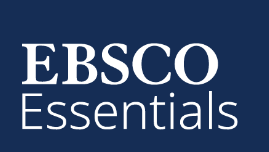Current Conditions and Desirable Conditions for Innovation Promotion Activities Related to Entrepreneurship
Keywords:
Innovation creation, entrepreneurship, general education subjectsAbstract
The objectives of this research were to: (1) study the current and desirable conditions for the implementation of innovation promotion concerning entrepreneurship of the general colleges at Mahasarakham University, and (2) study the needs and necessities of promoting innovation in entrepreneurship of the general student offices, Mahasarakham University. The group of informants used in this study were 41 administrators, professors and personnel selected by a specific method (purposive sampling). The tool used for data collection was a questionnaire with a 5-level rating scale, 1 issue and 47 items with an index of consistency (IOC) between 0.67-1.00, discriminant power between 0.70-0.98 and a confidence value of 0.99. Statistics used in data analysis were frequency, mean, percentage (m), the standard deviation (s) and the required value (PNIModifed). The results were as follows: (1) The current state of the innovation promotion operation concerning entrepreneurship had an overall level of moderate. Individual aspects with the highest averages were development/improvement (act), followed by the implementation of the plan (do), and the least ranked was the planning (plan). Desirable Conditions for Promotion of Innovation in Entrepreneurship Overall was at a high level. It was found that the aspect with the highest average value in 3 order was follow-up/check (check), followed by planning (plan), and the least ranked was development/improvement (act), respectively. (2) The results of the analysis of the prioritization of necessarily needs (PNIModifed) to be used as a guideline for promoting innovation in entrepreneurship showed that the planning aspect had the most necessary needs, followed by the aspect. Implementation should be according to plan (do) and follow-up/check (check) and the least important is development/improvement (act).
References
Caprelli, L. (2018). 7 Reasons why innovation is important. Forbes.
Chumkaew, S. (2654). Best practices in project management and research units. Journal of Social Sciences in Measurement Evaluation Statistics and Research,2(1), 1-16.
Kaewsanan, K., & Chirinung, P. (2021). Organization management to success. Journal of Buddhistic Sociology, 6(4), 88-108.
Karunpracha, K. (2020). Developing a curriculum for gathering activities: “Entrepreneurship” based on the intellectual training concept from the prototype for high school students. Naresuan University.
Kritakhom, S. (2021). The basic conceptual framework of public relations. Journal of Modern Learning Development, 6(5), 261-273.
Laksaniyanon, B. (2018). Human resource management. Udon Thani Rajabhat University.
Madmai, B. (2008). Continuous improvement according to the PDCA model. National Productivity Institute.
National Innovation Agency. (2019). Book 10th Year NIA: Toward Innovation nation. National Innovation Agency (Public Organization).
Pratchayasiri, P. (2009). Planning. Information and Communication Technology Center.
Ritcharoon, P. (2020). Successful research project management. Sripatum Chonburi Journal, 17(1), 179-189.
Securities Exchange Commission. (2022). Human resource management and development policy. Securities Exchange Commission.
Singhasutakorn, S. (2017). Reviewing and improving fnancial plans: An important thing that cannot be neglected. Venture Planner Investment Advisory Securities Company Limited.
Studdist (Thailand) Co., Ltd. (2020). Tips for improving production effciency: Techniques for increasing work effciency. Studist (Thailand) Company Limited.
Suksomwat. (2020). Guidelines for teaching and learning to promote student entrepreneurship: Crowdsourcing electronic journal of education (OJED). Chulalongkorn University.
Srisa-ard, B. (2010). Preliminary research. Suviriyasas.
Downloads
Published
Issue
Section
License

This work is licensed under a Creative Commons Attribution-NoDerivatives 4.0 International License.





